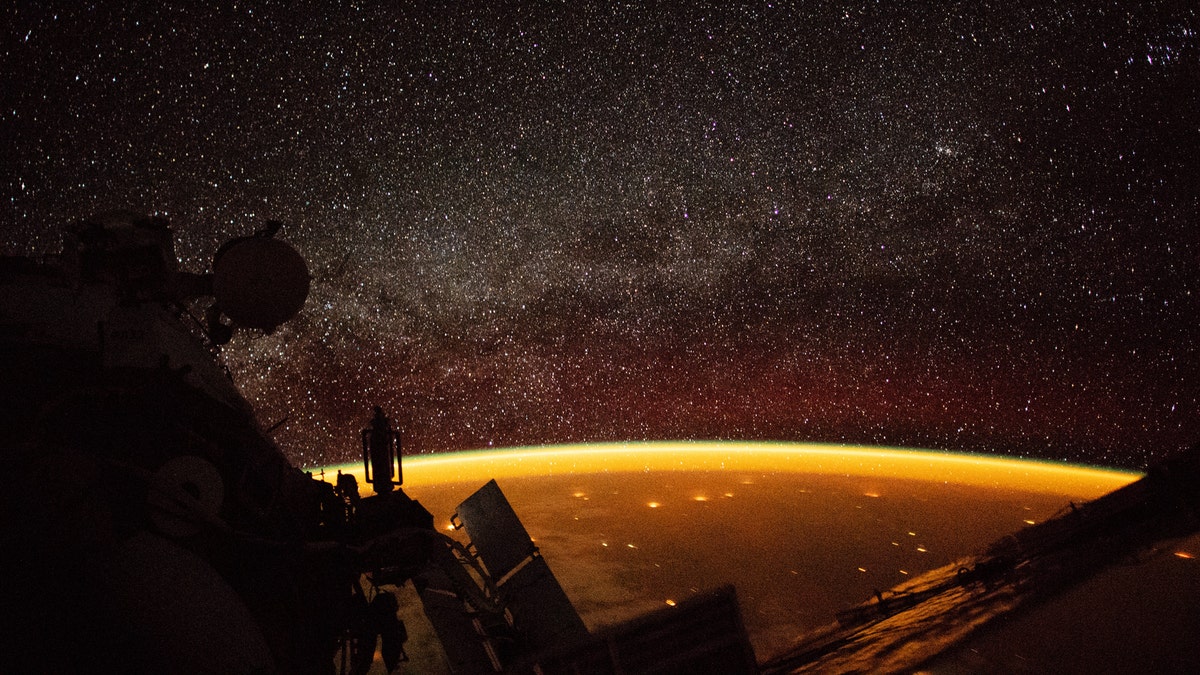
(Credit: NASA)
No, you're not looking at a strange alien planet or the Earth through an Instagram filter – this orange glow is known as an airglow, courtesy of NASA.
According to the space agency, the airglow is "diffuse bands of light that stretch 50 to 400 miles into our atmosphere." It typically occurs when molecules, largely nitrogen and oxygen, are "energized by ultraviolet radiation from sunlight."
From there, the atoms "in the lower atmosphere bump into each other and lose energy in the collision. The result is colorful airglow," NASA wrote on its website.
NASA POSTS PHOTO OF CRASHED 'FLYING SAUCER FROM OUTER SPACE'
Space.com reports that although this particular airglow is orange, others have been rainbow-colored.
The image was taken by an astronaut onboard the International Space Station on Oct. 7, while orbiting more than 250 miles over Australia, NASA added.
Although it looks awesome in any light, it's best seen during the nighttime, since it's 1 billion times fainter than sunlight, according to a 2012 article from NASA. "This chemiluminescence is similar to the chemical reactions that light up a glow stick or glow-in-the-dark silly putty," NASA wrote at the time.
The naturally occurring phenomena allows scientists to understand how particles move near the interface of Earth and space, "including the connections between space weather and Earth weather," NASA wrote on Tuesday.
SPACE SHOCKER: ASTRONOMERS CONFIRM EARTH HAS TWO HIDDEN 'DUST BUNNIES' FLOATING AROUND IT
There are satellites used to study this, including NASA’s Ionospheric Connection Explorer satellite, which "will help scientists understand the physical processes at work where Earth’s atmosphere interacts with near-Earth space."
So the next time you want to put a filter on a picture, perhaps giving it a healthy "airglow" would be a good option.
Follow Chris Ciaccia on Twitter @Chris_Ciaccia




















